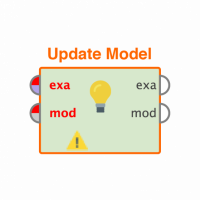The Altair Community is migrating to a new platform to provide a better experience for you. In preparation for the migration, the Altair Community is on read-only mode from October 28 - November 6, 2024. Technical support via cases will continue to work as is. For any urgent requests from Students/Faculty members, please submit the form linked here
Retrieve deleted folders
I installed RapidMIner Studio. Then created a Repositoryand saved it to the Desktop. The Repository attached itself to folders that were already on the Desktop and have nothing to do with RapidMiner. Then in RapidMiner, I removed the folders in the Repository window, and now those folders are permanently deleted and cannot be found in the Recycle Bin. Where did they go? Do I restore my system to an earlier state?
0
Best Answer
-
 arive123
Member Posts: 3
arive123
Member Posts: 3  Contributor I
Contributor I
It appears the recovery tool Disk Drillyou recommended is for Mac. Is there one you recommend for Windows?
0


Answers
Hello, @arive123,
Oh-oh...
When you delete a file programmatically (like when you do that in Java), the process inside the operating system is the following:
*If you take a theoretical microscope and search how the data is saved into disk, the filesystem inside has a structure much like this one:
{ cluster: number }
[ header ]
[ data ]
[ pointer ]
The header (that's not the correct technical term but I can't remember a better one) shows 0 if that cluster isn't in use or the file entry identifier otherwise, and the pointer has the number of the next cluster on that file. A file is saved in many clusters, the file entry has a pointer to the first node for that file. Everytime the file is opened, there is an iterator that reads the file entry, then the header, copies the data in memory, reads the pointer to the next cluster to repeat the operation.
When you delete those files from Windows (like, pressing the Del key), only the last line of the process is different: instead of removing the file entry, it is remapped to C:\Recycled or something in that fashion.
The question is: where did they go? the answer is Nowhere. the file entry is deleted (think as removing a table of contents from a book) but your information might still be recoverable as it is on the disk. To get your information back, you should use a recovery tool such as Disk Drill. The thing is, the more you use the computer and save information there, more possibilities of actually destroying your information by overwriting with new things you have. Basically, the operating system still keeps the information. By far much more cost-effective than actually filling each bag.
It would be a clever thing if you could turn your computer off without downloading anything until you get a copy of that program on USB or something.
That is why there is a .RapidMiner hidden directory (which isn't hidden in Windows, but that's another story): moving a repository to another location is something people shouldn't do unless they know what are the consequences and be extremely careful with data that is stored on these disks.
Hope it helps and you recover your information.
All the best,
https://www.cleverfiles.com/disk-drill-windows.html